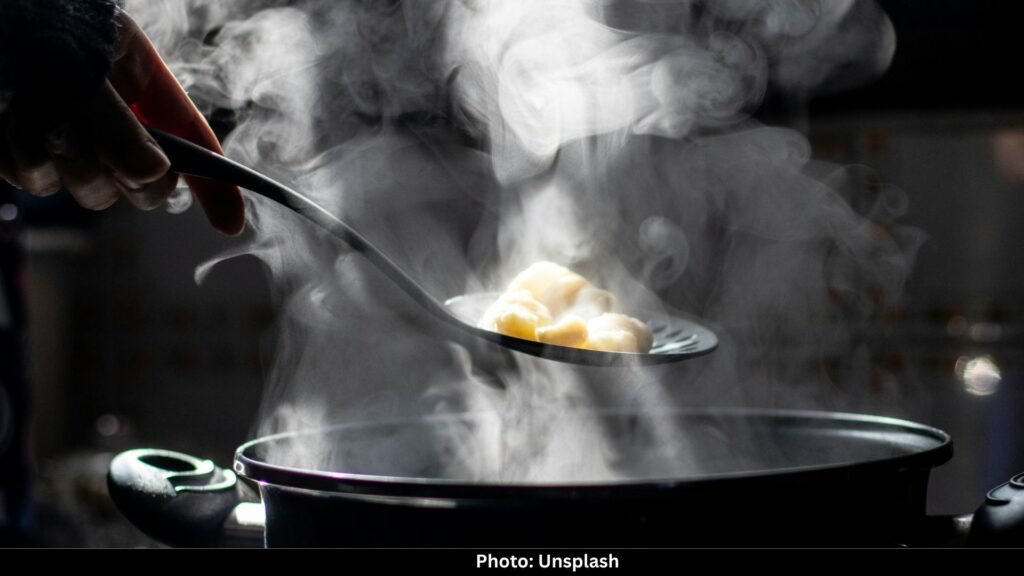We all rely on leftovers. After a long day, reheating a meal feels easy and satisfying. A steaming plate of last night’s dinner is tempting, but it isn’t always safe. Reheated food can make you sick if it has been stored incorrectly, left out too long, or not heated properly.
Safety doesn’t end once the cooking is done. Cooling, storing, and reheating matter just as much. You can cook meat perfectly, but if it sits on the counter for hours or is reheated unevenly, bacteria can multiply and toxins can remain.
How Bacteria Turn Safe Food Into a Risk
Bacteria are everywhere. Salmonella, Listeria, and Bacillus cereus are the ones most likely to cause trouble in leftovers.
Salmonella is common in poultry, eggs, and meat. Left at room temperature, it multiplies. Even after reheating, toxins may remain. Listeria grows slowly and can survive in the fridge. It’s often found in deli meats, soft cheeses, and ready-to-eat foods. Bacillus cereus survives cooking, especially in rice or pasta. Left out too long, it produces toxins that reheating doesn’t remove.
The “danger zone” for bacteria is between 40°F and 140°F. Food left in this range for more than two hours becomes risky. A casserole on the counter or a pot of soup left to cool slowly can turn a safe meal into a problem.
Temperature Matters
Reheating isn’t just about warming food. It needs to reach 165°F throughout to be safe.
Microwaves heat unevenly. Cold spots can let bacteria survive. Stirring and letting food rest allows heat to spread evenly. Stovetop or oven reheating usually works better for large portions. Cutting food into smaller pieces before reheating also helps.
Foods That Need Extra Care
Some foods are more likely to cause problems if not handled correctly:
- Rice and pasta can harbor Bacillus cereus spores. Left out, these spores produce toxins.
- Meat and poultry can harbor Salmonella or E. coli.
- Seafood spoils quickly, and reheating doesn’t remove bacterial toxins.
- Dairy-based dishes like custards, quiches, or creamy sauces spoil fast.
- Soups and stews can cool unevenly, letting bacteria thrive in the center.
Knowing which foods are riskier helps you focus on storage and reheating.
Cooling and Storage
Proper cooling is as important as reheating.
- Refrigerate leftovers within two hours of cooking.
- Divide large portions into smaller containers for faster cooling.
- Use airtight containers to prevent contamination.
- Label containers with the date. Most cooked meals are safe for 3 to 4 days in the fridge.
Improper storage is the most common reason reheated food makes people sick.
Safe Reheating Practices
Reheat food evenly and thoroughly.
- On the stovetop, stir while heating.
- In the oven, cover dishes and heat thoroughly.
- In the microwave, stir halfway through and let rest afterward.
- Avoid reheating multiple times. Each cooling and reheating cycle gives bacteria another chance to grow. Only reheat what you plan to eat.
Real-Life Examples
A family prepares fried rice for dinner. The rice sits on the counter for three hours before going into the fridge. When reheated later, several family members experience nausea. Bacillus cereus toxins survived because the rice sat too long.
A large pot of chicken stew cools slowly at room temperature. Even after reheating, some portions make people sick because the center remained warm long enough for bacteria to grow.
These situations show how small oversights can turn safe meals into a risk.
Cultural Practices Around Leftovers
Different cultures handle leftovers in ways that reduce risk.
- In Japan, bento boxes are usually eaten the same day. Portioning meals for single-day consumption lowers risk.
- In India, cooked rice is often stored in small portions and reheated only once. Large quantities are avoided to prevent uneven cooling. Spices in traditional dishes sometimes slow bacterial growth, but proper storage is still necessary.
- In Scandinavia, oven-based reheating is common for large meals. This ensures even heating compared to microwaves.
- In many Middle Eastern households, cooked meats and rice are consumed fresh or cooled quickly in smaller batches. Shared meals encourage eating soon after preparation, reducing leftover storage time.
- These habits show that portioning, timing, and reheating methods all influence food safety.
Common Misconceptions
- Hot-looking food isn’t automatically safe. Visual cues are unreliable.
- Refrigeration slows bacterial growth but doesn’t kill all bacteria.
- Smell and taste are poor indicators. Many bacteria do not change flavor or odor.
- Repeated reheating does not reset safety. Every cooling and warming cycle gives bacteria a chance to grow.
Symptoms of Foodborne Illness
Improperly stored or reheated food can cause nausea, vomiting, diarrhea, stomach cramps, and fever. Symptoms may appear hours or even days later. Children, pregnant women, older adults, and people with weakened immune systems are more vulnerable.
Tips for Safer Leftovers
- Cool food quickly in small portions
- Reheat to 165°F and check temperature throughout
- Store in airtight containers
- Limit exposure at room temperature
- Avoid multiple reheating cycles
- Eat leftovers within 3 to 4 days
Additional Tips
- Use a food thermometer for large portions.
- Stir soups and stews while cooling to prevent bacteria from growing in the center.
- Keep cooked rice covered; moisture and warmth encourage bacteria.
- Label leftovers and eat older meals first.
Why Awareness Matters
Food safety requires attention. Improper reheating or storage is preventable but requires deliberate habits. Understanding the risks and proper techniques allows you to enjoy convenience without danger.
Bottom Line
Reheated food can make you sick if it hasn’t been stored or reheated properly. Prompt refrigeration, thorough heating, portioning, and avoiding repeated reheats keep leftovers safe. Following simple, consistent practices allows you to enjoy leftovers without worry.
Read More: Why We Can’t Resist Sitting on the Floor Even With Sofas Around




